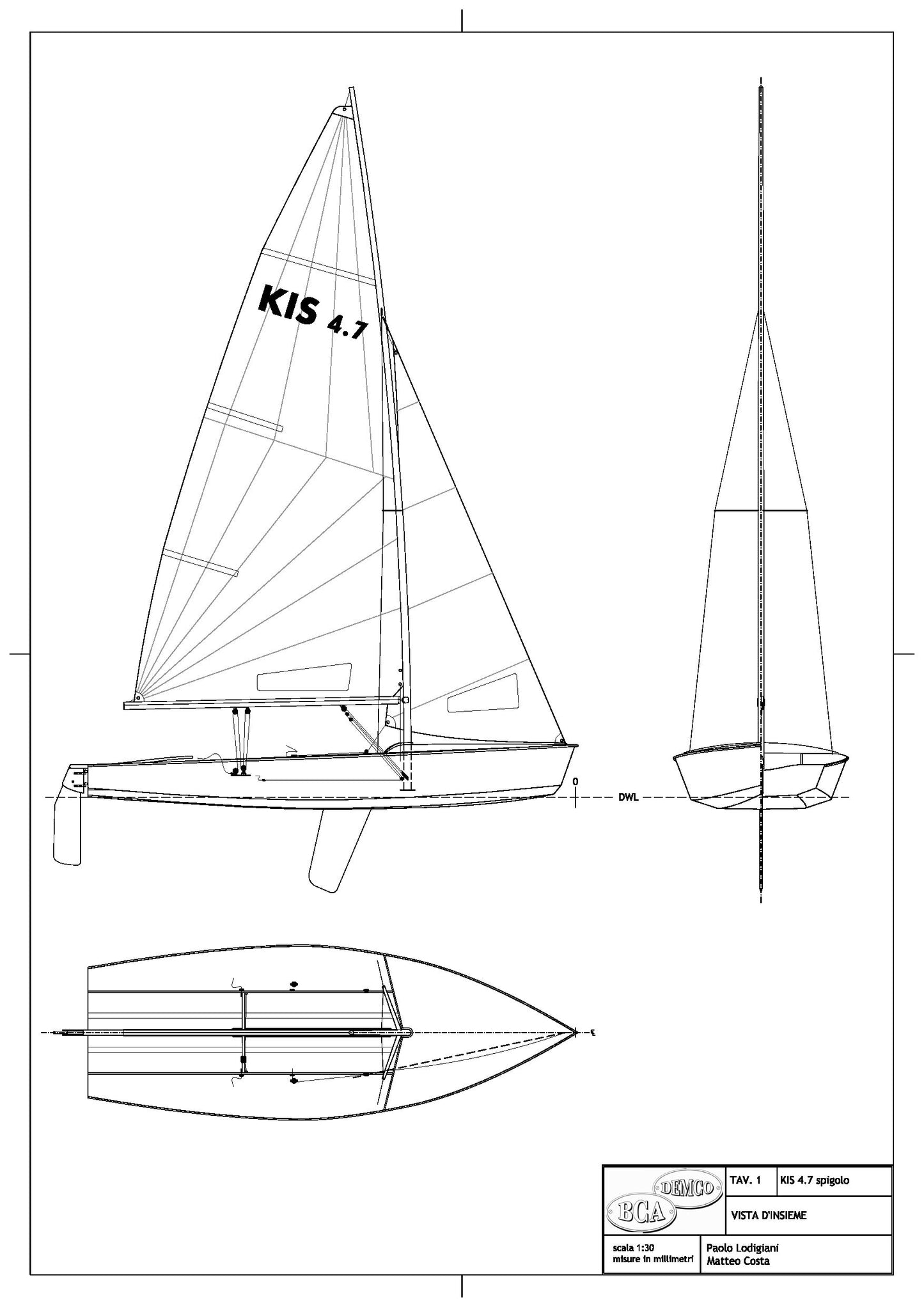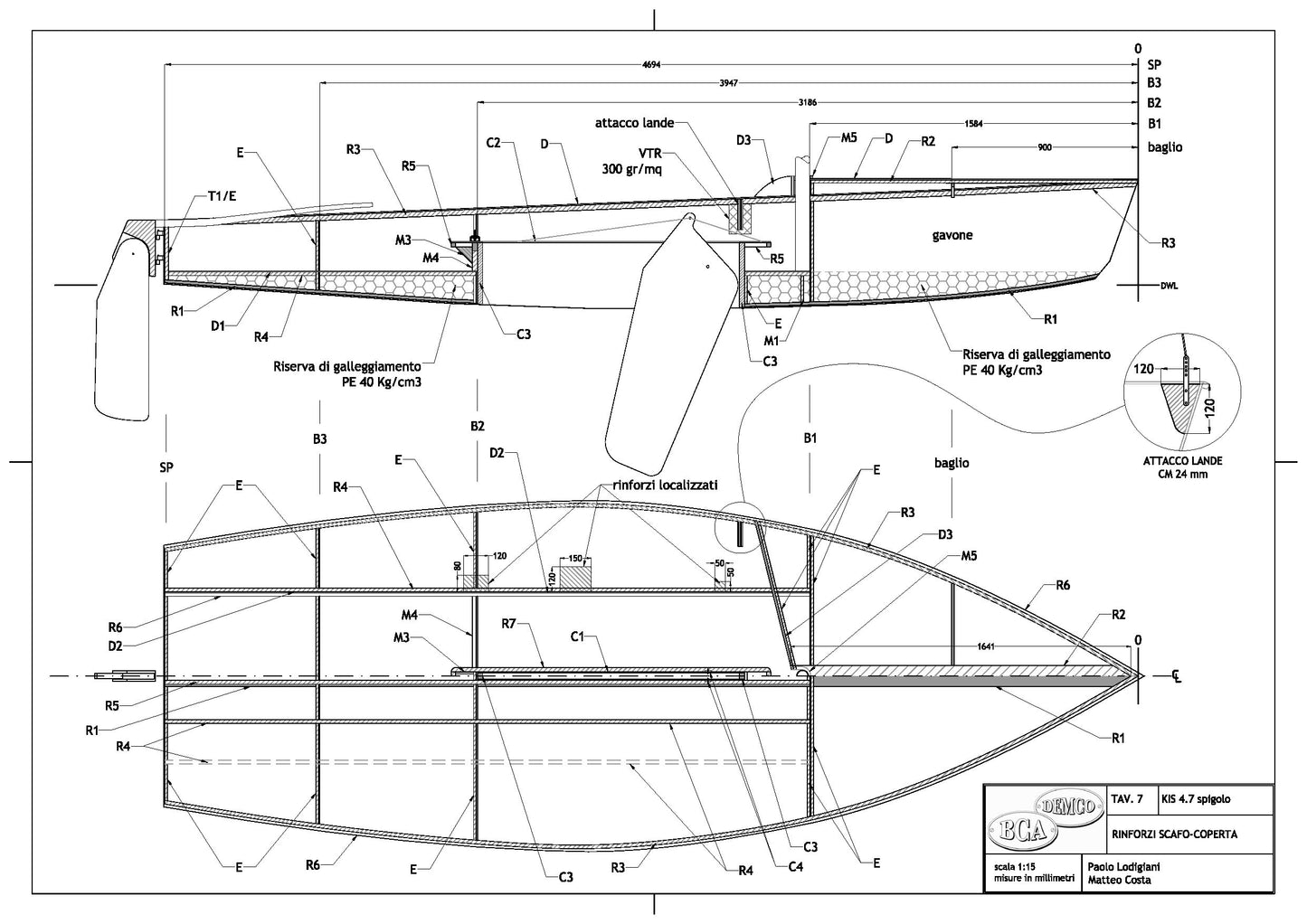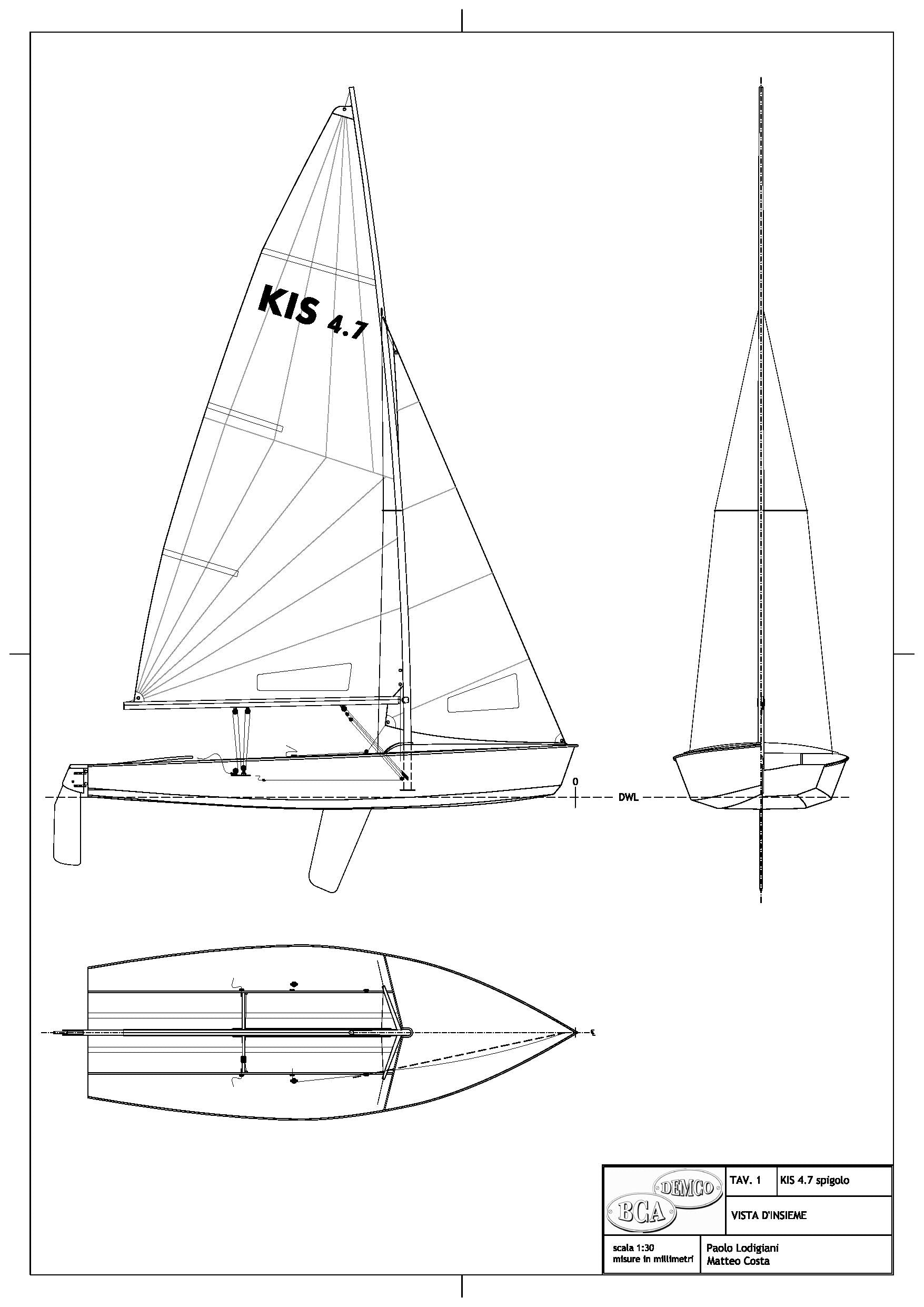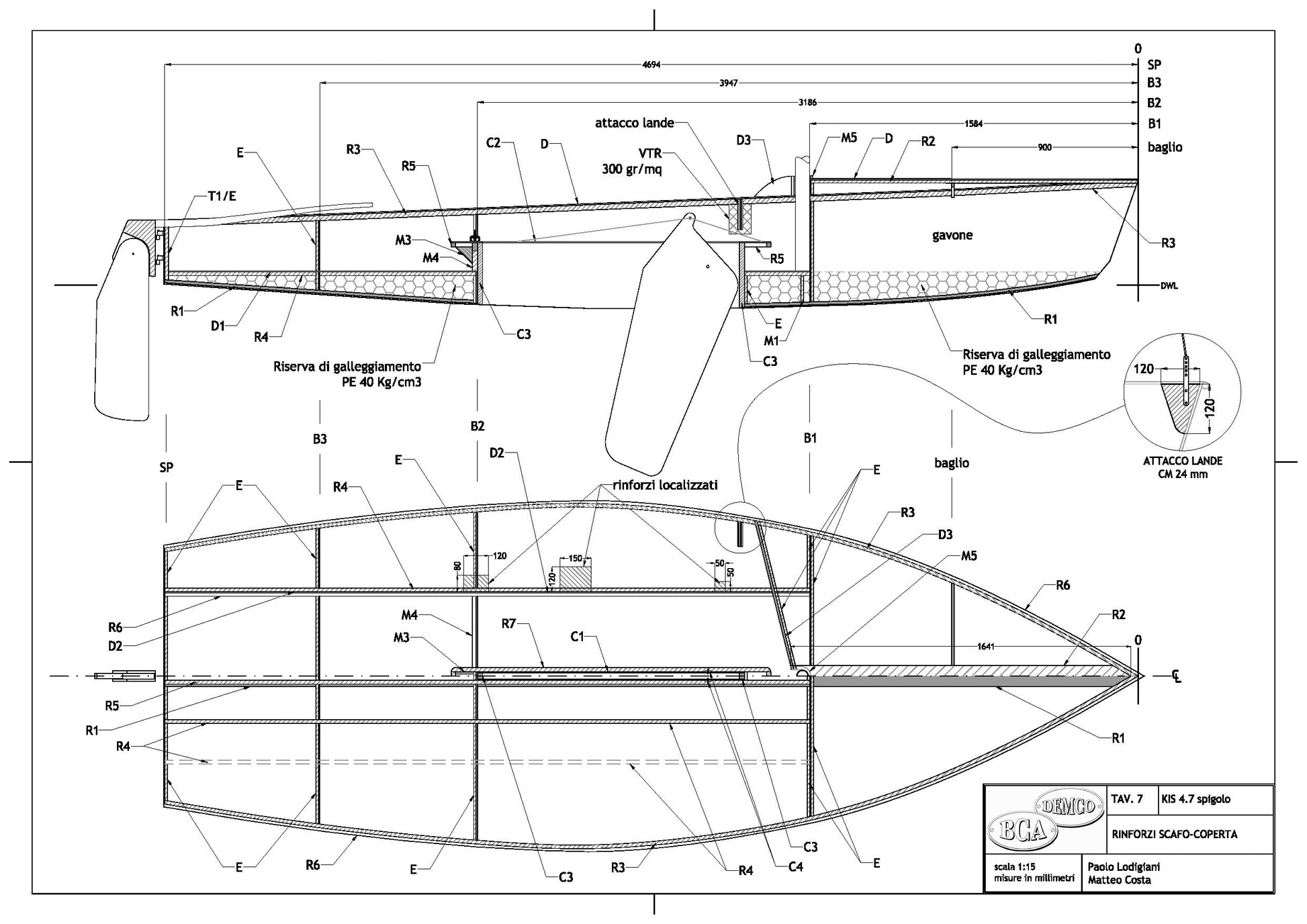13 ft - KIS 4.2S
13 ft - KIS 4.2S
BCA DEMCO KIT
We designed KIS dinghies in order to meet a very practical need of amateur boatbuilders. Since they often find themselves in trouble in building masts, sails and rig of their boats and are likely to spend in these items much more than what they paid for the materials to build the hull , we thought to design four boats, simple and easy to build, suitable to be rigged with spars and sails of four very popular dinghies : Laser , Flying Junior , 420 and 470.
This allows the builder to easily find equipment and accessories for his boat , either buying them new from dealers either finding them on the second hand market. Since the racing helmsmen change sails and masts with a certain frequency it is quite easy to find used rig, sails and rudders in good condition at reasonable prices .
The hulls of our boats are of course different from those of their “parent dinghies” , mainly because, in order to meet the needs of inexperienced builders, we have designed chine hulls instead of round hulls . However, we have maintained the same basic size parameters of the original boats and similar features for the hull shape. As they are known as excellent boats, which have already proven their quality over decades of long and glorious career, there was no reason to radically change designs that represent the best of what the nautical design has produced in this field . Only in the layout of the cockpits we have introduced some changes because the original boats are designed for fiberglass construction, with solutions that are not easily reproducible in wooden boats. We also preferred for all boats to have a double bottom and a self-bailing cockpit, which we feel is a very handy feature, useful also for safety purposes . The position of mast and centerboard is the same as in the parent boats, in order to keep the same centers of aero and hydro dynamical forces. These similarities allow us to predict that the performance and behavior of KIS dinghies will be very close to that of their parent boats. Obviously they cannot participate in official races of the respective classes but they can meet them informally or in club races on almost equal terms.
The construction technique is that of the stitch and glue , which allows to obtain solid , stiff and light hulls , fully comparable in quality to those of the fiberglass.
In summary, with these dinghies we wanted to achieve what is called a paraphrase of the original ones: " The paraphrase - Wikipedia writes - is characterized by an " humble " intent: to accompany a difficult text with a version that will smooth out the difficulties." This is exactly what we intended to do : build a real Laser or a real 470 for an amateur builder would be difficult. We tried to make it more accessible.
That's why we called these boats KIS boats, where KIS is taken from the famous acronym , widely used in computer science, KISS (Keep it simple, stupid ) . We agree with the call to simplicity , but it seemed more polite to remove the second S as a form of respect towards our customers. The paraphrase can be considered a tribute that the author of the paraphrase makes the one of the original text, and this is precisely our intent . We admire deeply the boats that have inspired our ones, we have known them thoroughly in many years of sailing practice. It is no coincidence that all four boats, although now several decades old, still have legions of fans. It seems a good thing that their quality can be appreciated even by those who love to build a boat with their own hands.
KIS 4.7
The boat is compatible with the rig of the 470. This well-known dinghy, designed in 1963 by the French architect André Cornu, had an immediate success and it has been an Olympic class since 1976. Like all the Olympic classes which are not strictly monotype (as the Laser ), the 470 has become a very sophisticated, complicate and quite expensive boat. Our 4.7 does not share these features, but to a non racing sailor it offers performances fully comparable to those of the 470. We modified the cockpit adding a double bottom in order to make it self-draining and we have changed the design of the benches to facilitate the construction.
Length: 4,70 m
Design: Paolo Lodigiani & Matteo Costa
Chine Hull, Stitch and Glue construction
Building skills: beginners.
Couldn't load pickup availability
Share



